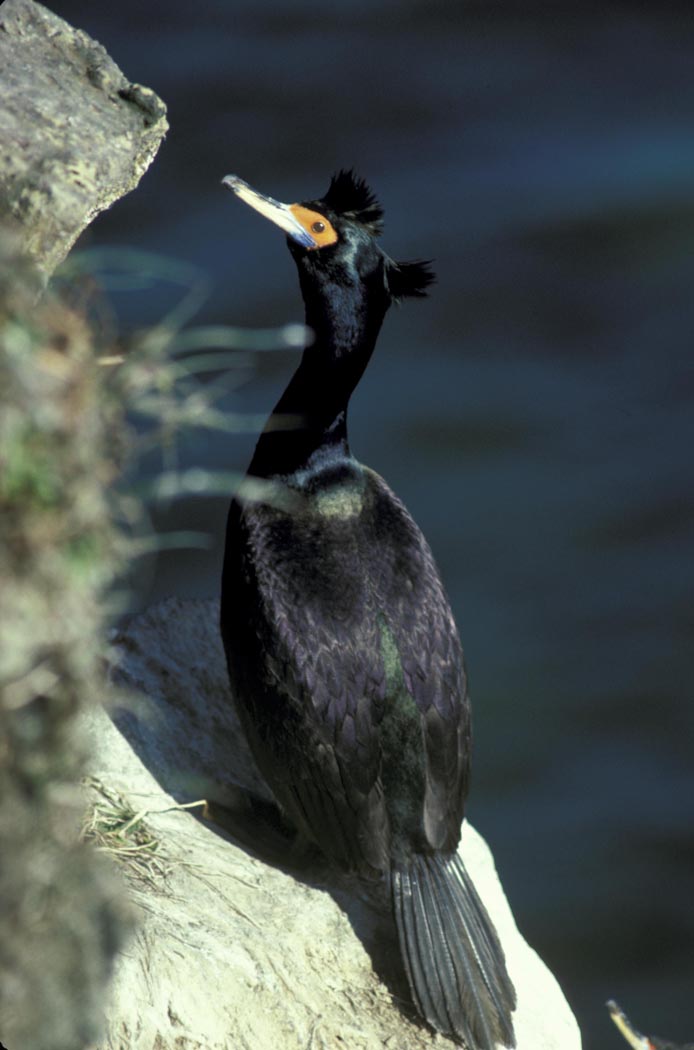- Red-faced Cormorant
Taxobox
name = Red-faced Cormorant
status = LC | status_system = IUCN3.1

image_width = 200px
regnum =Animal ia
phylum = Chordata
classis =Aves
ordo =Pelecaniformes
familia =Phalacrocoracidae
genus = "Phalacrocorax "
species = "P. urile"
binomial = "Phalacrocorax urile"
binomial_authority = (Gmelin, 1789)The Red-faced Cormorant, Red-faced Shag or Violet Shag, "Phalacrocorax urile" is a species of
cormorant that is found in the far north of thePacific Ocean andBering Sea , from the eastern tip ofHokkaidō inJapan , via theKuril Islands , the southern tip of theKamchatka Peninsula and theAleutian Islands to theAlaska Peninsula andGulf of Alaska . The Red-faced Cormorant is closely related to thePelagic Cormorant "P. pelagicus", which has a similar range, and like the Pelagic Cormorant is placed by some authors (e.g. Johnsgaard) in a genus "Leucocarbo ". Where it nests alongside the Pelagic Cormorant, the Red-faced Cormorant generally breeds the more successfully of the two species, and it is currently increasing in numbers, at least in the easterly parts of its range. It is however listed as being of conservation concern, partly because relatively little is so far known about it.The adult bird has glossy plumage that is a deep greenish blue in colour, becoming purplish or bronze on the back and sides. In breeding condition it has a double crest, and white plumes on the flanks, neck and rump, and the bare facial skin of the lores and around the eyes is a bright orange or red, giving the bird its name; although the coloration is less vivid outside the breeding season, the red facial skin is enough to distinguish it from the otherwise rather similar Pelagic Cormorant. Its legs and feet are brownish black. Its wings ranges from 25 to 29 cm in extent, with females having on average about 5cm shorter wings. Adults weigh between 1.5 and 2.3 Kg, with females averaging 350g less than males.
Analysis of stomach contents suggests that the Red-faced Cormorant is mainly a bottom feeder, taking cottids especially. Adults have few predators, though
river otter s may attempt to take them, as willcorvid s of various species andBald Eagle s. Gulls and corvids are common predators on eggs and chicks.External links
* [http://www.absc.usgs.gov/research/seabird_foragefish/photogallery/Picture_of_Month/Aug05-RFCO/Aug05-RFCO.htm USGS feature about the species]
References
* Database entry includes justification for why this species is of least concern
*Johnsgaard, P. A. (1993). "Cormorants, darters and pelicans of the world". Washington DC, Smithsonian Institution Press.
Wikimedia Foundation. 2010.
